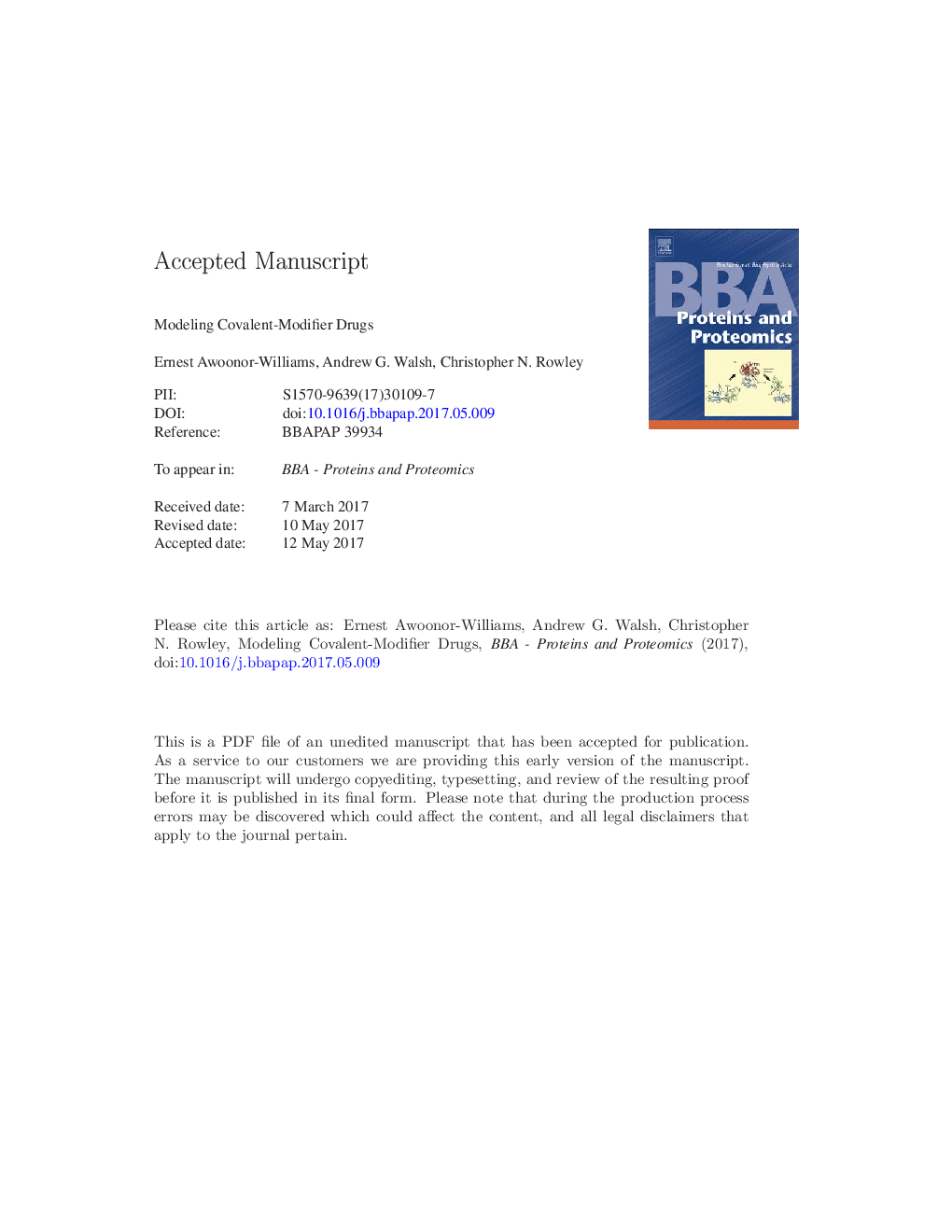| کد مقاله | کد نشریه | سال انتشار | مقاله انگلیسی | نسخه تمام متن |
|---|---|---|---|---|
| 7560798 | 1491445 | 2017 | 40 صفحه PDF | دانلود رایگان |
عنوان انگلیسی مقاله ISI
Modeling covalent-modifier drugs
ترجمه فارسی عنوان
مدلسازی داروهای کوانتومی-اصلاح کننده
دانلود مقاله + سفارش ترجمه
دانلود مقاله ISI انگلیسی
رایگان برای ایرانیان
کلمات کلیدی
موضوعات مرتبط
مهندسی و علوم پایه
شیمی
شیمی آنالیزی یا شیمی تجزیه
چکیده انگلیسی
In this review, we present a summary of how computer modeling has been used in the development of covalent-modifier drugs. Covalent-modifier drugs bind by forming a chemical bond with their target. This covalent binding can improve the selectivity of the drug for a target with complementary reactivity and result in increased binding affinities due to the strength of the covalent bond formed. In some cases, this results in irreversible inhibition of the target, but some targeted covalent inhibitor (TCI) drugs bind covalently but reversibly. Computer modeling is widely used in drug discovery, but different computational methods must be used to model covalent modifiers because of the chemical bonds formed. Structural and bioinformatic analysis has identified sites of modification that could yield selectivity for a chosen target. Docking methods, which are used to rank binding poses of large sets of inhibitors, have been augmented to support the formation of protein-ligand bonds and are now capable of predicting the binding pose of covalent modifiers accurately. The pKa's of amino acids can be calculated in order to assess their reactivity towards electrophiles. QM/MM methods have been used to model the reaction mechanisms of covalent modification. The continued development of these tools will allow computation to aid in the development of new covalent-modifier drugs. This article is part of a Special Issue entitled: Biophysics in Canada, edited by Lewis Kay, John Baenziger, Albert Berghuis and Peter Tieleman.
ناشر
Database: Elsevier - ScienceDirect (ساینس دایرکت)
Journal: Biochimica et Biophysica Acta (BBA) - Proteins and Proteomics - Volume 1865, Issue 11, Part B, November 2017, Pages 1664-1675
Journal: Biochimica et Biophysica Acta (BBA) - Proteins and Proteomics - Volume 1865, Issue 11, Part B, November 2017, Pages 1664-1675
نویسندگان
Ernest Awoonor-Williams, Andrew G. Walsh, Christopher N. Rowley,
